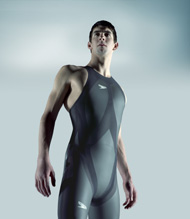Applications of nanotech may not be as futuristic as they seem
When you hear the word “nanotech,” science fiction most likely comes to mind. From Iron-Man’s virtual suit to gadgets from the Terminator series, nanotechnology has been used in the film industry for decades as a Get Out of Jail Free card for explaining the unexplainable. Nanotechnology has been used as the technology of the future by both film professionals and enthusiasts. However, a nanotech future may not lie as far away as it seems.
Nanotechnology is technology that deals with dimensions of less than 100 nanometers, nanometers being one billionth of a meter. Despite its minuscule size, nanotechnology is already in use today. Take carbon nanotubes, which are making batteries lighter and more efficient (1). Carbon nanotubes consist of bonded carbon atoms arranged in the form of a tube. Due to their structure, they have high strength and durability, while staying lightweight. They also have high electrical and thermal conductivity and an extremely smooth surface (5). In addition to their purpose as batteries, carbon nanotubes can be used in water filters, body armor, and vehicles (1). Engineers also regularly use the structures in a field less obviously connected to technology: sports.

Carbon nanotubes have a wide variety of applications in sports; for example, they help make bike frames and tennis rackets lighter, and golf clubs and hockey sticks more accurate and powerful. They also help create faster and more stable kayaks, and tennis balls that maintain their bounce for long periods of time (2). Nanotechnology has become so integrated into sports that officials have even started to ban it from serious competitions. Federation Internationale de Natation Amateur, (FINA), the governing body on the sport of swimming, has declared the use of nanotech in swim suits as “technology doping” and banned their use from competitions. They argue that, at a certain point, nanotech creates performances that surpass the raw ability of humans (3).
With nanotech becoming integrated into sports, it may seem like only a matter of time before we reach the futuristic worlds of science fiction movies. However, a number of issues with nanotechnology still persist. A key barrier to its use is our inability to control its conductivity, meaning it is not ready to be used in transistors, devices used to amplify or switch electrical signals (4). Chirality, a property of asymmetry in molecules, is very important to the conductivity of carbon nanotubes; however, as of this moment, scientists cannot determine the chirality of specific nanotubes (4). If we become able to assess the chirality of nanotubes, we can control the semiconducting properties of the tubes and implement them in electronics on a widespread basis.

While nanotube progress has slowed in the transistor department, it has sped up in another surprising field, ink, where it is used in displays, and medical technology. It also has the potential to be used in consumer electronics. For example, nanotechnology might inspire a new generation of smartphones with a roll-up screen, or allow us to create a see-through GPS (4). Now, that sounds a lot more futuristic! While these implementations and nanotechnology as a whole are still in development, their existence signals that our future may look a lot more like a sci-fi film.
Bibliography:
1. Applications of Nanotechnology | National Nanotechnology Initiative. (2014). Retrieved January 23, 2022, from Nano.gov website: https://www.nano.gov/about-nanotechnology/applications-nanotechnology
2. Unlimited Ball Bearings Corp. (2015). Retrieved January 23, 2022, from Nanoshel a Nanotechnology Company website: https://www.nanoshel.com/Nanotechnology-in-Sports-Equipment
3. Guardian staff reporter. (2012, May 8). Does nanotechnology offer athletes more than a sporting chance? Retrieved January 23, 2022, from the Guardian website: https://www.theguardian.com/nanotechnology-world/does-nanotechnology-offer-athletes-more-than-a-sporting-chance
4. staff, S. X. (2014, March 31). Carbon nanotubes find real world applications. Retrieved January 23, 2022, from Phys.org website: https://phys.org/news/2014-03-carbon-nanotubes-real-world-applications.html
Michael Berger. (2014, April 13). Carbon nanotubes – what they are, how they are made, what they are used for. Retrieved February 6, 2022, from Nanowerk.com website: https://www.nanowerk.com/nanotechnology/introduction/introduction_to_nanotechnology_22.php#:~:text=Applications%20of%20carbon%20nanotubes%20and,used%20as%20additives%20to%20synthetics.






Comments are closed.